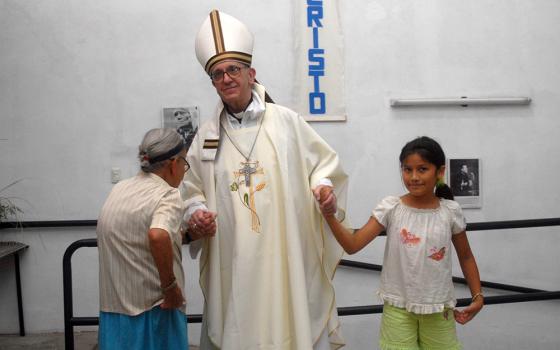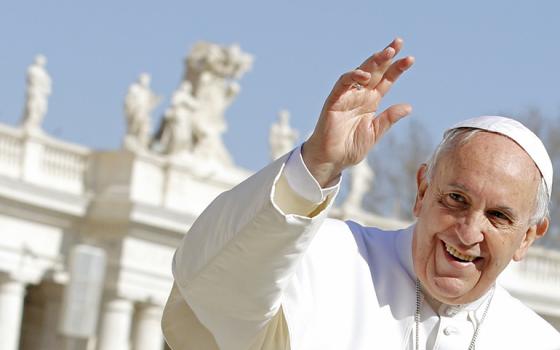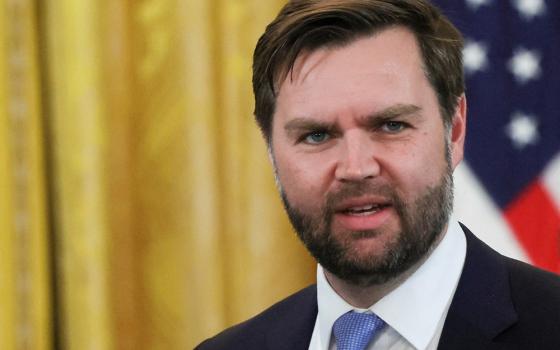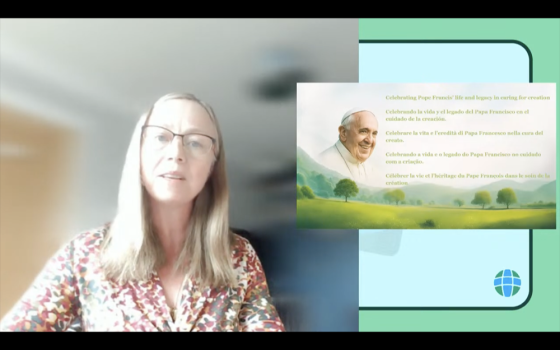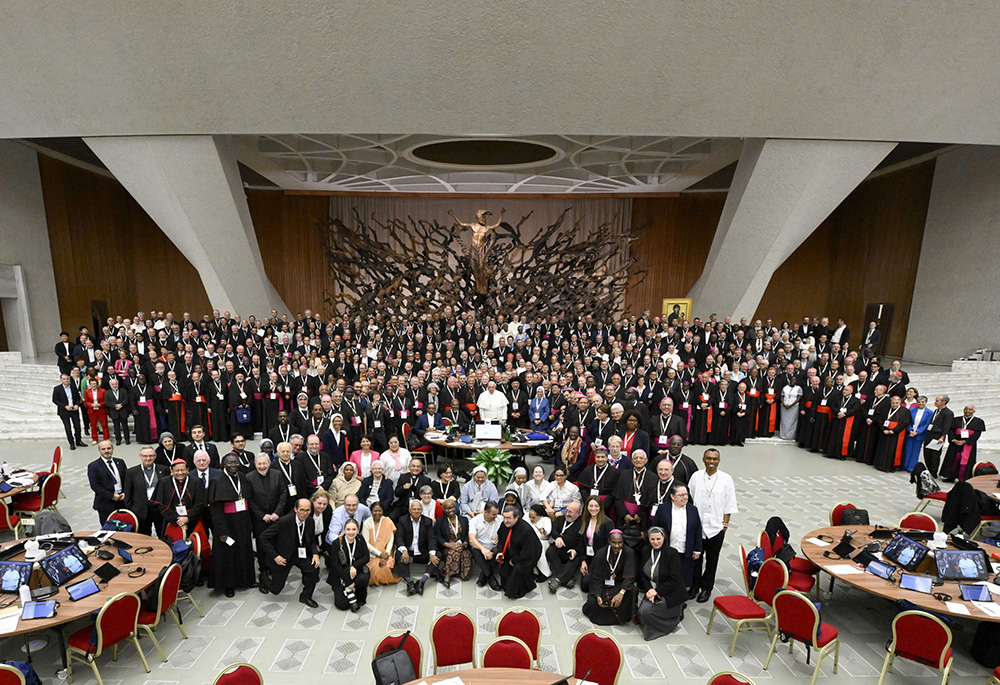
Pope Francis and members of the Synod of Bishops on synodality pose for a photo after the synod's final working session, Oct. 26 in the Paul VI Audience Hall at the Vatican. (CNS/Vatican Media)
The life of the church in 2024 was defined as much by what did not happen, as by what did. And, the most important thing that did happen, the second session of the Synod of Bishops on synodality in Rome, was an event which was important at the tectonic level, deep underneath the surface.
At the start of 2024, I noted that there were four archbishops serving past the mandatory retirement age of 75, and another seven would cross that threshold in the course of the year. In addition, as expected Archbishop Christopher Coyne, who started the year as the coadjutor, took the reins of the archdiocese of Hartford on May 1. The possibility of filling 11 archbishoprics would allow Pope Francis to profoundly reshape the U.S. hierarchy.
Only two of the 11 available openings were filled this year. In August, Pope Francis transferred Bishop Richard Henning of Providence, Rhode Island, to Boston, and in November, the Holy Father named Chicago Auxiliary Bishop Jeffrey Grob as archbishop of Milwaukee. Both are consequential appointments, but two out of 11 does not significantly move the hierarchy in the pastoral direction to which Pope Francis has called the church.
The failure to appoint new archbishops in Detroit and Kansas City, Kansas, is especially problematic. The seminary in Detroit has been a hotbed of anti-Francis sentiment for years. How many young priests were taught, at best, confusedly, about the magisterium of the past 12 years? How many imbibed a lousy ecclesiology that thinks it is OK to hold the pope in contempt?
Advertisement
In Kansas City, Archbishop Joseph Naumann has been a consistent voice for fighting abortion in the most vitriolic of ways. How has that worked out? Not well in most states that have held referendums about protecting abortion rights since the overturning of Roe v. Wade, with 12 states expanding or codifying liberal abortion laws, three rejecting referendums that would have done so, and Nebraska voting to limit the time when an abortion can be procured legally. That is not a great track record.
The National Eucharistic Congress was held in Indianapolis in July and it attracted the enthusiastic participation of a sliver of the Catholic population. The eucharistic congress served its original purpose: It was an off-ramp from the disastrous decision by Archbishop José Gomez, who was then the president of the bishops' conference, to set up a committee to examine the issue of pro-choice politicians receiving Communion. And if it drew some people closer to the Lord, great. It has not had much of an effect on most Catholics in the pews.
There was a bit of good news coming out of the two plenary meetings of the U.S. bishops' conference this year. At their spring meeting in Louisville, the bishops voiced overwhelming support for the Catholic Campaign for Human Development, the bishops' principal anti-poverty program. At their autumn meeting in Baltimore, the bishops defeated the most arch-conservative candidates for various committee chairs. Will that momentum carry over to the 2025 elections for new, more Francis-friendly officers of the conference? Time will tell.
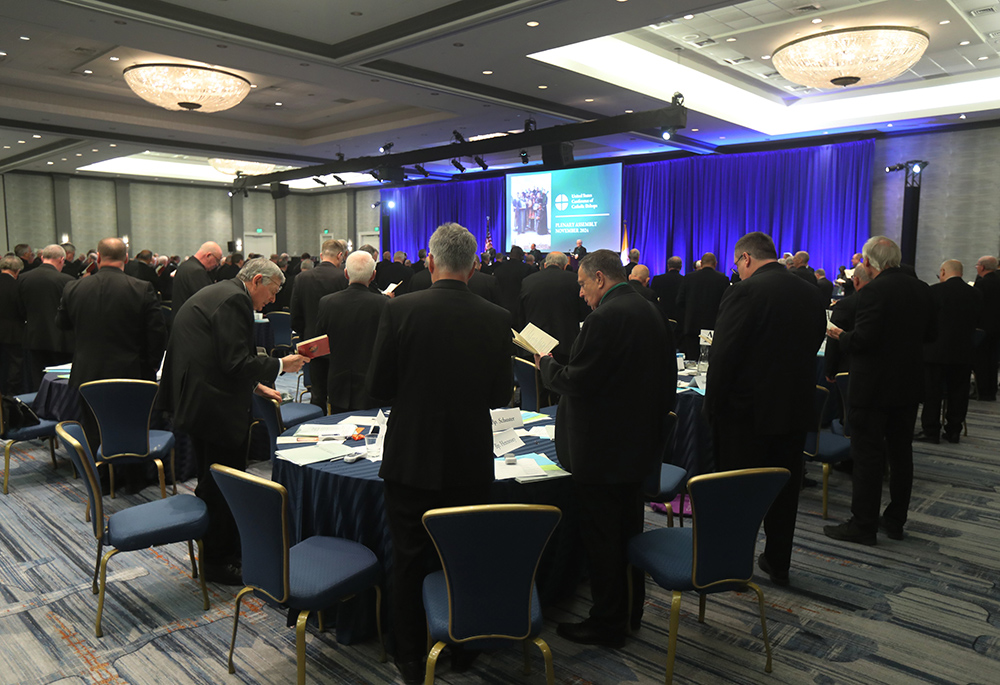
Prelates pray during a Nov. 12 session of the fall general assembly of the U.S. Conference of Catholic Bishops in Baltimore. (OSV News/Bob Roller)
At the Vatican, the biggest story was the second session of the synod, which did not produce much in the way of headlines, but did cement synodality as a much-needed change in the way the universal church confronts difficult problems and decisions. It is hard to imagine a future synod that did not include women religious and laity as voting members. Perhaps the Vatican can find a new use for the old synod hall with its theater style seating from which delegates heard endless speeches; The model of synod delegates sitting at tables and having real discussions is here to stay.
Rearranging the membership and the seating at a global synod only gets the church so far. The real test will be whether or not synodal procedures seep down into the diocesan and parish structures of the church. If they do, this will constitute a major step away from the Ultramontanism of the late 19th and 20th century.
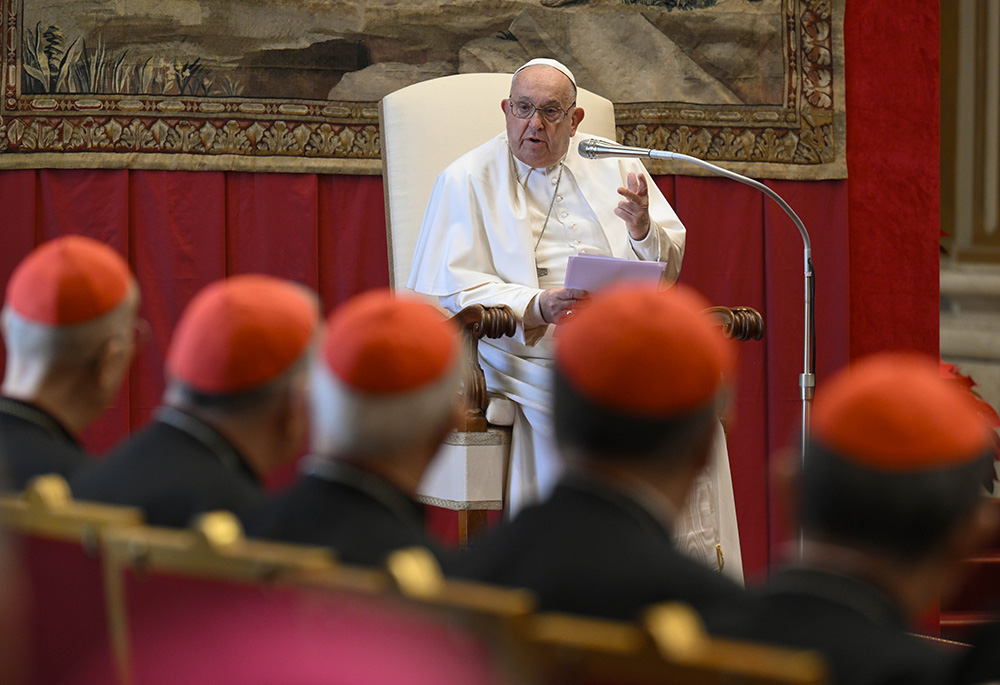
Pope Francis reads his speech to officials of the Roman Curia and the College of Cardinals during his annual pre-Christmas meeting with them in the Hall of Blessing above the atrium of St. Peter's Basilica at the Vatican on Dec. 21. (CNS/Vatican Media)
If synodality is viewed in terms of empowerment, it will fail. The church lives by grace, not by the distribution of power. Synodality aims to empower the Spirit's governance of the church, not the influence of special interest groups or agendas.
The year finished with a consistory at which Pope Francis created 21 new cardinals. With this latest batch, Pope Francis has conferred red hats on prelates from nearly 30 countries that have never had a cardinal before. Just as Pope John Paul II was the first pope to visit many countries throughout the world, Francis has brought representatives of those far-flung countries into the highest ranks of hierarchy. That may prove a mixed blessing, but it is a blessing nonetheless.
2024, then, was like a yearlong Advent. There is a lot of anticipation. With Advent, we know the story ends with the birth of the baby Jesus. It is less clear how the ecclesiological changes we witnessed will come to fruition. Pope Francis is an ecclesial Johnny Appleseed, planting seeds wherever he goes. There can be no harvest unless someone plants the crop, but a lot of hard work, weeding and tilling and watering, has to occur in 2025 and beyond if those seeds will grow and bear fruit.

